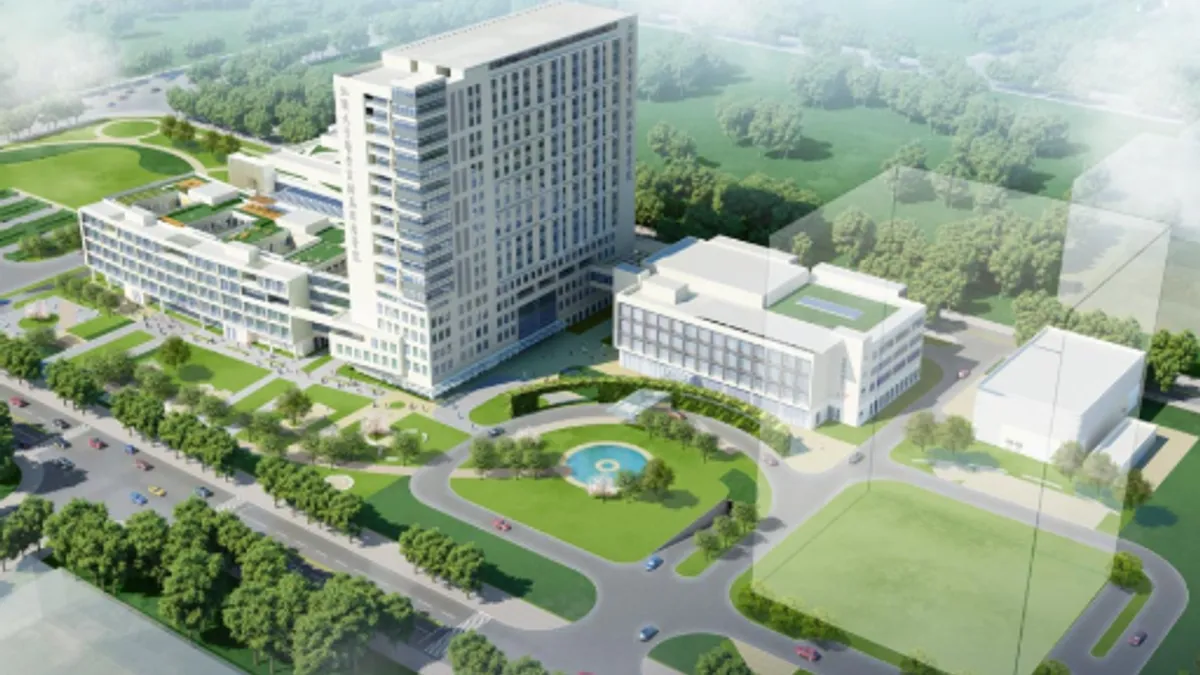Dive Brief:
- The total U.S. digital twin industry is estimated to soar from $3.8 billion to almost $36 billion by 2025, driven in part by the COVID-19 pandemic, analysis by research firm MarketsandMarkets shows.
- In the age of COVID-19, digital twin technology will make it possible for building owners to design and build for maximum social distancing under various human traffic scenarios and to strategically incorporate and test other building elements like occupant temperature, contact-free interfaces and robotics, according to digital twin provider Cityzenith.
- While BIM software and other 3D visualization tools are useful during the design and construction phases, Cityzenith said that a digital twin encompasses the building's operational phase as well and accommodates the "mass scaling of 3D object models and data."
Dive Insight:
A digital twin is a virtual replica of a structure that incorporates not only the building's physical elements but also external data such as changes in climate or tenant and visitor traffic in order to better understand how the building will function during its entire lifecycle.
“Because … we have software that can model in insane detail every bit and piece of a building, you can now have a digital copy of that building,” said Clifton Harness, CEO of TestFit, which produces building configurator software. “This enables ... the owner of the building or a user in the building to do some things with that model you wouldn’t be able to do otherwise.”
This includes converting properties for another use, which the industry has seen happen during the COVID-19 pandemic. “For example,” Harness said, “if we had a digital twin of all the hotels that the Army Corps of Engineers are trying to convert into hospitals right now, it would make that process quite a bit easier from a planning standpoint.”
At this point, he said, the technology might only be practical for users that have massive amounts of square feet to manage.
“Currently,” he said, “very few buildings are getting a digital twin because the level of detail that has to go into the modeling is so high that no architect gets paid enough to do that kind of thing.”
Also, oftentimes the model doesn’t exactly match the as-built version of the project, he added.
In addition, when project teams are modeling in BIM, Harness said, many don’t model the entire building, depending on the type of structure. For example, he said, when building multifamily projects, teams might model only one type of apartment layout even though that layout repeats throughout the structure.
The time and financial commitment to incorporating digital twins can also be significant as there is not just one piece of software or one product that contractors can use to launch such an initiative. Typically, digital twin programs incorporate 3D simulation, artificial intelligence, cloud computing and other technologies. The cost of training and education related to digital twins can also add up.
Nevertheless, a number of construction companies and others in the industry are excited about the technology’s prospects.
Daryl Patterson and Bill Ruh of Lendlease Group recently told ConstructConnect that digital twin technology has an advantage over BIM in that it can "allow designers to virtually create, test, analyze data, build and monitor a product, thus closing the feedback loop between design and operations," creating "a bridge between the physical and digital world."
In construction, this means that a project team can reap the benefits of a construction test run before one shovel hits the dirt, saving time on the schedule and weeding out any inefficiencies in the building process, they said.










